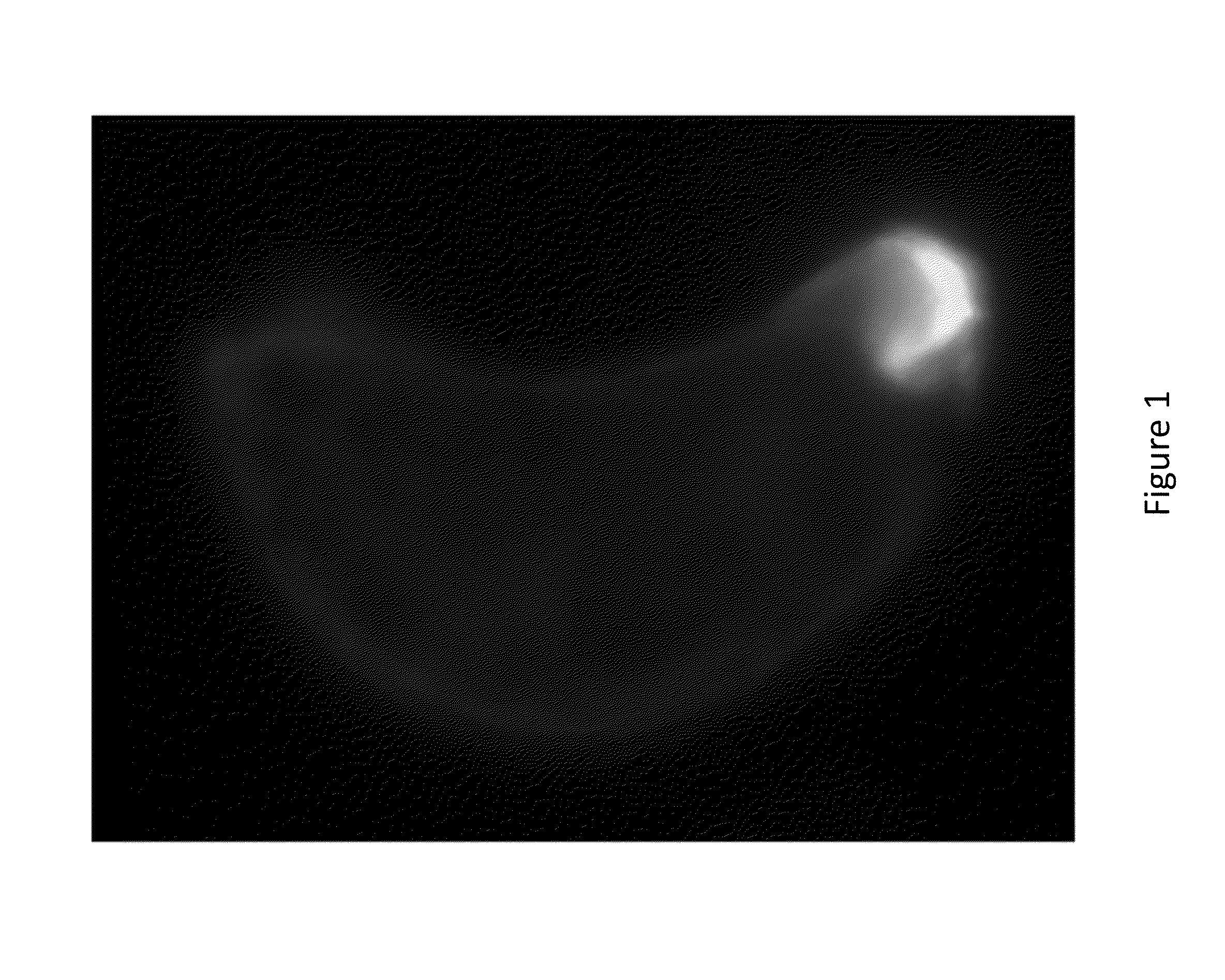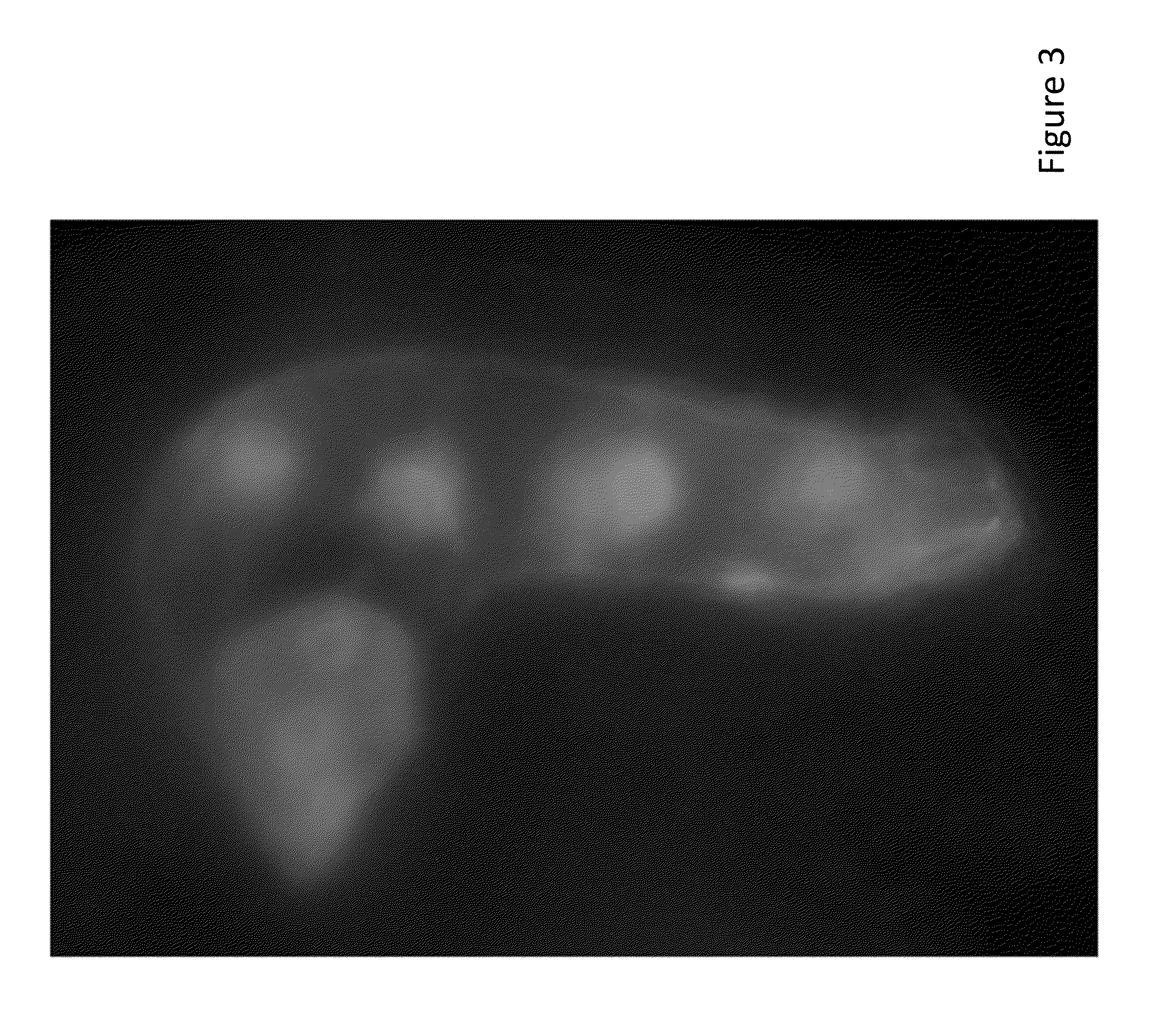Method to Screen Plants for Genetic Elements Inducing Parthenogenesis in Plants
a technology of parthenogenesis and plant elements, applied in the field of plant molecular biology, can solve the problems of not identifying genes which produce somatic embryogenesis in seeds, and no successful similar method for maintaining self-reproducing plant crops, and achieve the effect of not preventing the endosperm from fertilizing
- Summary
- Abstract
- Description
- Claims
- Application Information
AI Technical Summary
Benefits of technology
Problems solved by technology
Method used
Image
Examples
example 1
Creation of the Apomictic Library
[0154]Embryo Sac specific promoter (AT DD2 promoter, AT DD31 promoter, AT DD1 promoter), AT DD65 promoter, EASE promoter, or any other embryo sac promoter incorporated by reference above)
[0155]Apomicitic Genetic Source—for example: developing ovules from Boechera holboellii or other apomictic Boechera sp., apomictic orchids, apomictic apples, Malus sp., apomictic Rubus sp., apomictic Citrus sp., Hieracium sp., Hypericum sp., Pennisetum sp. or other apomictic or non-apomictic plant species.
[0156]Early Globular Embryo—KTI3 PRO:AC-GFP1
[0157]Transformation and separation of adventitious embryo from maternal tissues expressing a GFP signal for seed selection using Union Biometrica COPAS (Complex Object Parameter Analyzer and Sorter) seed sorter, found on the world wide web at www.unionbio.com / copas / U.S. Pat. No. 6,657,713, Dec. 2, 2003 and U.S. Pat. No. 6,400,453, Jun. 4, 2002, Large Object Sorter: Fluid Controlled Machine for Selecting and Depositing Mul...
example 2
[0159]This approach utilizes a maternal embryo defective (embryo lethal) recessive mutation which is then maintained in an approach similar to that used in the Sterile Inbred Maintenance System (SIMS) or Seed Production Technology (see, U.S. Pat. Nos. 7,696,405, 7,915,398 and 7,790,951). A transgenic cassette is introduced which has three parts: a wild type allele to complement the embryo lethal mutation, a pollen ablation PTU to prevent transgene transmission through the pollen and a seed color marker to allow removal of a transgenic population from the seeds produced. Another embodiment uses negative counter selection in the maintainer construct wherein a negative selection is activated through an inducible expression system, a metabolic counter-selection chemical application or other means. The resultant population will be homozygous for the recessive mutant allele, but transgenically complemented. These plants should segregate 1:1 in the subsequent genera...
example 3
Embryogenesis Gain-of-function Screen (EGS)
[0185]Wild type Arabidopsis plants are transformed with a construct containing: pollen ablation, egg cell +, and seed color marker. Plants are then selfed to create a hemizygous transgenic population.
[0186]Hemizygous transgenic population of Arabidopsis plants are then transformed with a construct containing egg ablation.
[0187]Seed from viable plants is grown and resultant transformed Arabidopsis plants are hemizygous for the egg ablation construct. These plants are transformed with a construct from apomictic library containing somatic embryony and embryo color marker.
[0188]Further to describe this in more detail:
[0189]Construct A contains egg cell specific promoter: toxin gene
[0190]Construct B contains egg cell specific promoter: toxin antidote / pollen ablation PTU / seed color marker
[0191]When a plant comprising both Construct A and Construct B is selfed:
[0192]Female gametes are 100% A+B (because A− only are non-viable)
[0193]Male gametes are...
PUM
| Property | Measurement | Unit |
|---|---|---|
| Fraction | aaaaa | aaaaa |
| Fraction | aaaaa | aaaaa |
Abstract
Description
Claims
Application Information
 Login to View More
Login to View More - R&D
- Intellectual Property
- Life Sciences
- Materials
- Tech Scout
- Unparalleled Data Quality
- Higher Quality Content
- 60% Fewer Hallucinations
Browse by: Latest US Patents, China's latest patents, Technical Efficacy Thesaurus, Application Domain, Technology Topic, Popular Technical Reports.
© 2025 PatSnap. All rights reserved.Legal|Privacy policy|Modern Slavery Act Transparency Statement|Sitemap|About US| Contact US: help@patsnap.com



